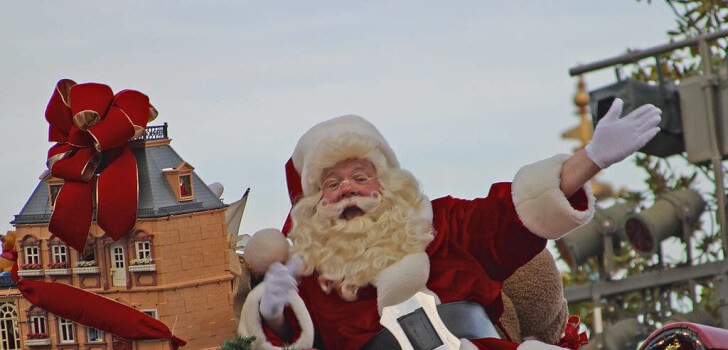Santa Claus has served as a symbol of the Christmas season for generations. The origins of the legendary bearded jolly man can be traced back to a monk named St. Nicholas who lived around 280 AD in modern day Turkey. St. Nicholas was greatly admired for his piety and kindness, and he quickly became the subject of many legends.
The most prominent legend is that St. Nicholas gave away his wealth by traveling the countryside to help the poor and the sick. One famous story is that he saved three poor sisters from being sold into slavery by leaving dowry money in their stockings hung by the fireplace. Over the years, the popularity of such tales caused the popularity of St. Nicholas to become widespread, giving him the distinction of being the protector of children and sailors.
By the time of the Renaissance, St. Nicholas was the most popular saint in Europe. Even after the Protestant Reformation, when it became discouraged to honor saints, St. Nicholas maintained a positive reputation, particularly in Holland. But it wasn’t until late in the 18th century that the legendary figure made his first appearance in American culture.
In the Decembers of 1773 and 1774, a newspaper in New York reported that groups of Dutch families had gathered to honor the anniversary of the saint’s death on December 6. This represented the first time that knowledge of the legendary monk became widespread in American culture.
Eventually, the name Santa Claus came about from the Dutch nickname of the saint, Sinter Klaas, which was a shortened form of Sint Nikolaas. In 1804, a member of the New York Historical Society John Pintard distributed woodcuts of St. Nicholas at the annual meeting of the society. The engravings contained traditional images of Santa Claus handing out stockings filled with toys to children.
These stories of Sinter Klaas became more popularized in 1809, when Washington Irving referred to St. Nicholas as the patron saint of New York in his historic book, The History of New York. There was no generally accepted appearance of St. Nicholas at this time. Some described him as a “rascal” with a red waistcoat, yellow stockings and a blue three-cornered hat. Others viewed him as a man wearing a broad-brimmed hat and a “huge pair of Flemish trunk hose”.
Soon, this coincided with the increasing popularity for gift giving around the holiday season. Stores started advertising for Christmas shopping around 1820. By 1840, these advertisements started including images of the popular Santa Claus figure. In 1841, thousands of children visited a store in Philadelphia to see a real life Santa Claus impersonator. This practice became a hit, and it wasn’t long until parents and their children began flocking to stores to meet Santa. Soon, the Salvation Army got in on the practice, sending men to dress up in Santa suits to collect donations, just like they have been in years since.
In 1822, Episcopal minister Clement Clarke Moore wrote the popular Christmas poem ‘Twas the Night Before Christmas. Originally written for his three daughters, this famous tale was largely responsible for the image of Santa Claus that is known to this day. The poem described Santa as a “right jolly old elf”, and it also told of his large figure and his ability to travel down a chimney. This popularized the modern image of Santa flying from house to house in a sleigh led by reindeer and leaving presents for children.
But it wasn’t until 1881 that political cartoonist Thomas Nast drew on inspiration from the poem to create the first ever likeness that matches the modern description of Santa Claus. The Nast cartoon depicted Santa as a round, cheerful man, complete with a full white beard and a sack of toys. This was also the first time that Santa was featured in a bright red suit trimmed with white fur at the North Pole. The image also included a workshop, elves and his wife, Mrs. Claus.
From there, Santa’s legend only continued to grow, eventually making him one of the single most iconic figures in the history of the world.
Stay Connected